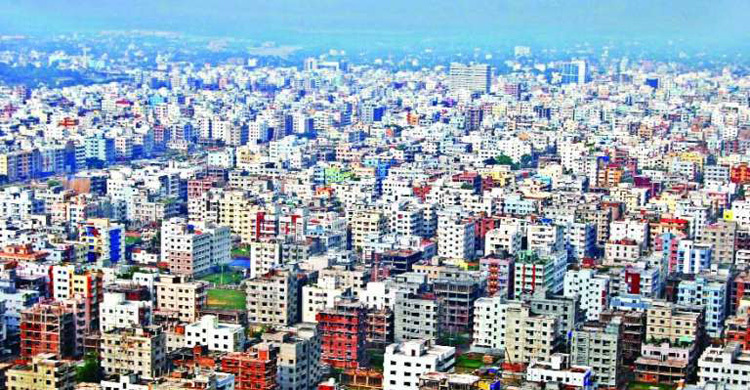Crisis in real estate sector as sales plunge

The country's real estate sector is currently facing a crisis due to several factors, including the high cost of construction materials and inflation.
Realtors are particularly dissatisfied with the new Detailed Area Plan (DAP) 2022, which introduced the Floor Area Ratio (FAR). This new regulation has significantly altered the permissible height and size of buildings based on the land area, causing both businessmen and landowners to lose interest.
Housing sector entrepreneurs report that Rajuk, the city development authority, is approving new building designs according to the FAR.
The decrease in new projects has led to a downturn in the housing sector. However, Rajuk maintains that these regulations aim to create a livable city prioritizing public welfare, reflected in the draft building construction policy.
Ahsan, a resident of West Dhanmondi, shared with Jago News that many people prefer building through a developer company for equal ownership. However, the FAR issue complicates this process. He explained that due to area fees, he could only get permission to build seven floors, where he would own three and a half floors. He questions the need to pass the plan or engage a developer company when he currently has a four-storey house.

Decreased plan approvals
The Real Estate and Housing Association (REHAB) states that typically 18,000 to 20,000 plans are passed each year, with an average of 2,000 to 2,500 plans approved in each of Rajuk's eight zones. Currently, only 1,000 to 1,200 plans are being passed due to FAR and DAP issues.
Reluctance to build new buildings over far
According to the draft building regulations, a four-storey house can be built within 20 feet of the road with a FAR of 2. If the road is less than 20 feet, the FAR reduces further, allowing only three to three and a half storey buildings. This has deterred landowners, as developer companies often demolish and rebuild structures on the land. Despite development, the resulting buildings are only three storeys high.
This perceived discrimination has caused dissatisfaction among landowners and businessmen alike. Abdur Rashid from Kanthalbagan mentioned that while there are tall buildings around his property, the new rules only permit him to build a six-storey building, despite the surrounding structures being much taller.
A Rajuk zone inspector stated that buildings would be constructed according to previously approved plans, but new plans would follow the current regulations.
Rajuk city planner and DAP project director, Ashraful Islam, explained that the 2008 construction rules were not scientific. The new regulations aim to address the lack of greenery and roads in the city, offering a realistic and scientific approach. He believes that the new rules will not impose additional costs or losses and will provide opportunities for larger buildings in metro areas.

Flat sales and prices
REHAB sources indicate that from 2010 to 2012, an average of 15,000 flats were sold annually. This number dropped to over 12,000 flats per year from 2013 to 2016 and increased to an average of 14,000 flats per year from 2017 to 2020. From July 2020 to June 2022, around 15,000 flats were sold annually. However, sales decreased due to the implementation of DAP and rising construction material prices, dropping to about 10,000 in the 2022-23 fiscal year and further declining in 2023-24.
Despite the decrease in sales, flat prices have risen, making them unaffordable for the middle class. Prices per square foot have surged from 5,000-6,000 taka to 8,000-10,000 taka, with the highest increases in elite apartments.
Liaquat Ali Bhuiyan, Senior Vice-President of REHAB and Chairman of Brick Works Limited, remarked that the DAP is pushing decent housing out of the middle class's reach. He emphasized the need for planned urbanization without FAR or DAP hindrances.

According to the new rules, the number of flats will decrease with the building's height and size, deterring new plans. This could discourage investment in the housing sector and cause landowners to suffer, ultimately resulting in significant revenue loss for the government.
Bhuiyan noted that construction projects take two to three years to complete, and the current flat prices reflect past costs. With skyrocketing prices for construction materials like rods, bricks, sand, and cement, flat prices have been adjusted accordingly. He believes that if construction material prices drop, flat prices will become affordable for the middle class again.
EAR/NMA





